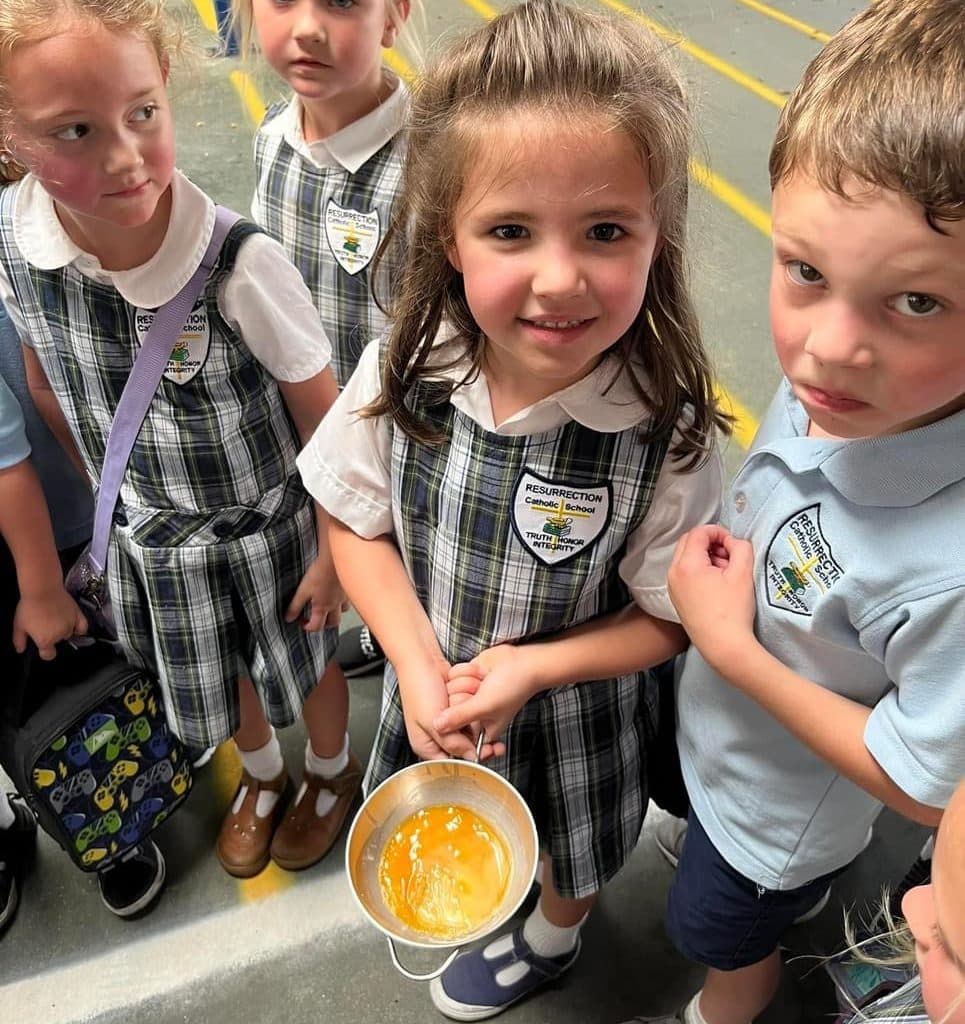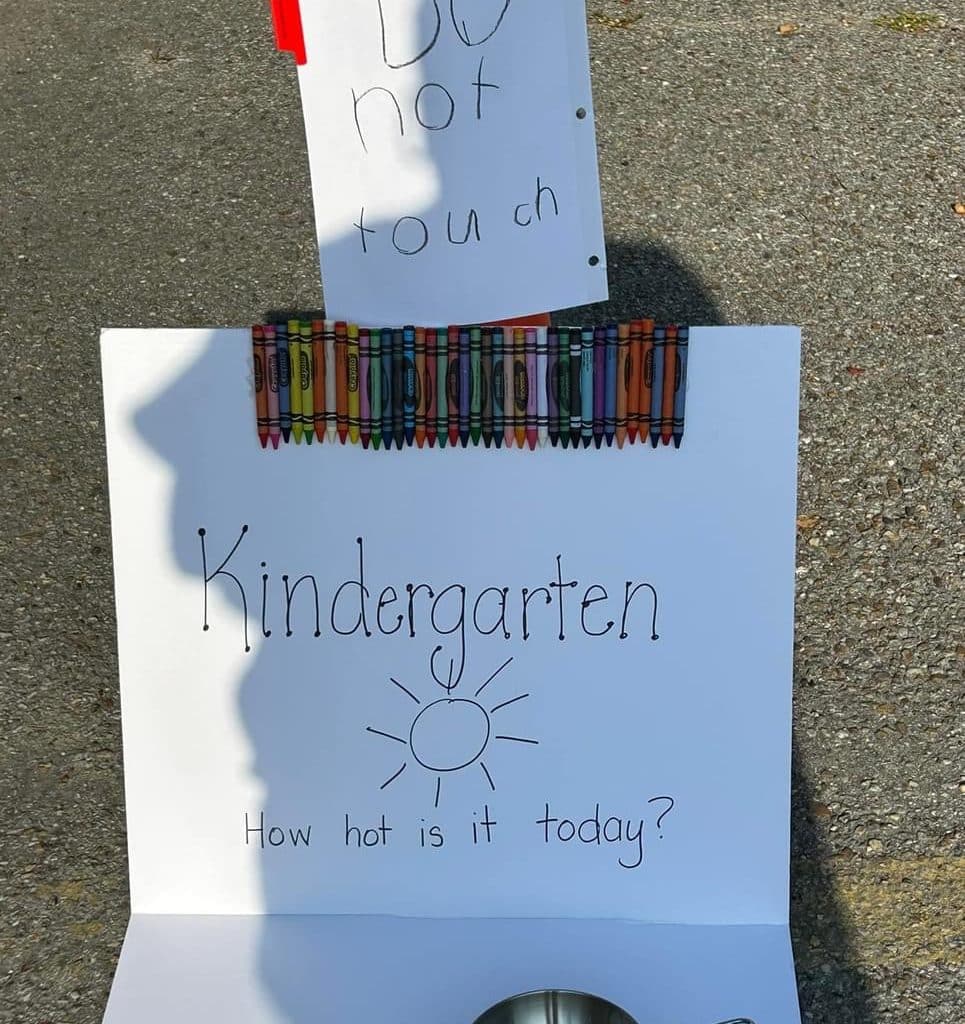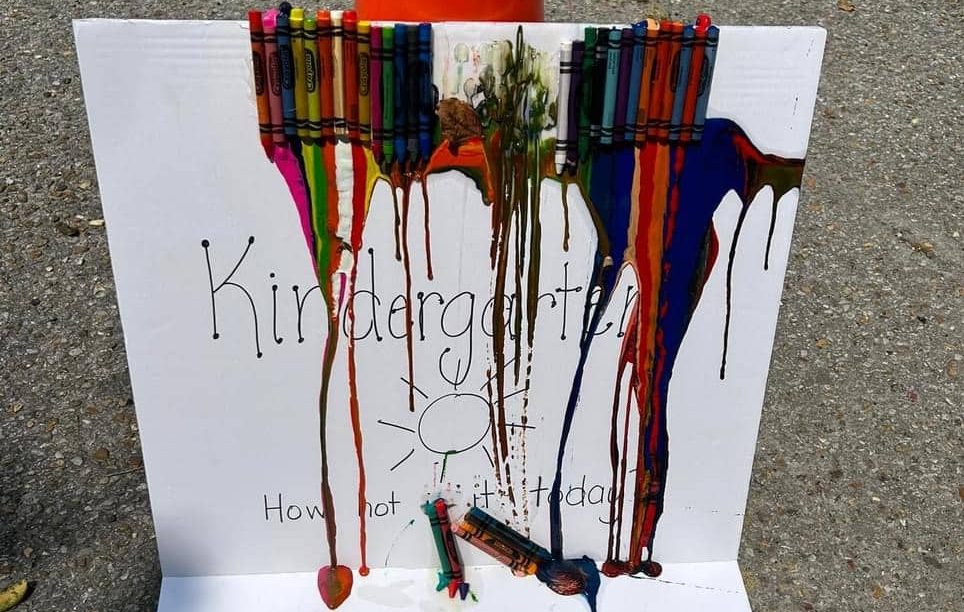Just how hot was it in Pascagoula last week?
According to Barbara Colville’s kindergarten class at Resurrection Catholic Elementary School (RCES), it was hot enough to melt crayons and cook an egg outside.
Colville saw the idea of melting crayons in a teacher Facebook group and thought it a fun experiment to do with her students because of the rising temperature.

“I love doing science with my kids because they are always so excited to do experiments,” Coville said.
After hot-gluing the crayons onto a backdrop, she took her class outside first thing in the morning to find a place to set it up. Knowing it needed to be in the sunlight, they chose the parking lot because it would be very sunny there. It was propped up by a traffic cone so the crayons would melt down.
In addition to melting crayons, Colville also decided to try to fry an egg at the same time.
“I always heard about people doing that so I thought this would be a perfect day to try that too.”
On this day the temperature was around 100 degrees. Definitely hot enough to melt and fry anything!
At the suggestion of one of the students, they made a “do not touch” sign so no one would disturb it.
The experiment officially started at 8:15 a.m.
Around noon, Colville’s class checked on the progress.
The egg was fried, but the crayons had not yet melted but were getting soft. And, there was an unexpected surprise in that the hot glue had also melted a little and some of the crayons had fallen off creating a puddle of wax that was interesting to see.

The final progress check was at 2:15 p.m. The crayons had started to melt down the backdrop and now the egg was completely solid.
The experiment was a success!
The students loved it, as did the parents. Colville always tries to do simple experiments that students can also do at home, which is something the parents appreciate. One parent had commented that science is now becoming her son’s favorite subject.
More science experiments are planned for the rest of the year and will be tied into the themes the class is learning about at the time. And to make it more exciting and realistic, several years ago Colville made science lab coats out of white t-shirts which the students enthusiastically wear when doing these activities, as well as putting on safety goggles.
And no doubt whatever the experiments will be about, the students will be as eager to learn as much as Colville will be eager to teach.
“It is all about getting them excited about something new.”




